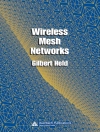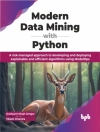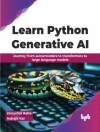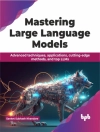The convergence of Artif icial Intelligence (AI) and Internet of Things (Io T) is reshaping the way industries, businesses, and economies function; the 34 chapters in this collection show how the full potential of these technologies is being enabled to create intelligent machines that simulate smart behavior and support decision-making with little or no human interference, thereby providing startling organizational efficiencies.
Readers will discover that in Reshaping Intelligent Business and Industry:
- The book unpacks the two superpowers of innovation, AI and Io T, and explains how they connect to better communicate and exchange information about online activities;
- How the center and the network’s edge generate predictive analytics or anomaly alerts;
- The meaning of AI at the edge and Io T networks.
- How bandwidth is reduced and privacy and security are enhanced;
- How AI applications increase operating efficiency, spawn new products and services, and enhance risk management;
- How AI and Io T create ‘intelligent’ devices and how new AI technology enables Io T to reach its full potential;
- Analyzes AIOT platforms and the handling of personal information for shared frameworks that remain sensitive to customers’ privacy while effectively utilizing data.
Audience
This book will appeal to all business and organization leaders, entrepreneurs, policymakers, and economists, as well as scientists, engineers, and students working in artificial intelligence, software engineering, and information technology.
Jadual kandungan
List of Figures xxiii
List of Tables xxxi
Foreword xxxiii
Preface xxxv
Acknowledgments xli
Acronyms xliii
Part I: Artificial Intelligence Applications
1 Artificial Intelligence Overview: Architecture, Applications and Challenges 3
Geet Kiran Kaur, Nandita Malik, Sharad Chauhan, Mankiran Kaur
1.1 Introduction 4
1.2 Artificial Intelligence Agents 7
1.3 Artificial Intelligence Algorithms 9
1.4 Applications of Artificial Intelligence 11
1.5 Conclusion 16
References 16
2 Video Analytics Using Deep Learning Models 19
Sanjeev Kumar Bhatt, S. Srinivasan
2.1 Introduction 20
2.2 Video Analytics 27
2.3 Object Detection and Object Tracking 29
2.4 Industrial Application 44
2.5 Conclusion 46
References 46
3 Optimizing Search Engine for Enhancing Computing and Communication in Real-Time Systems 49
Meeta Singh, Poonam Nandal, Deepa Bura
3.1 Introduction 50
3.2 Literature Review 53
3.3 Requirement Specification 54
3.4 Testing and Validation 57
3.5 Result 64
3.6 Conclusion and Future Work 66
References 66
4 The Need for XAI: Challenges and Its Applications 69
Swati, Menu Vijarania, Vivek Jaglan, Dac-Nhuong Le
4.1 Introduction 70
4.2 Literature Review 71
4.3 The Need for Exploring XAI 72
4.4 Scope of Explanation 74
4.5 Differences in Research Methodology 75
4.6 Conclusion 78
References 78
5 Why Law Firms Need to Embrace Artificial Intelligence to Transform the Indian Legal Industry 81
B. Dharneesh, S. Thenisha, S. S. Srithick, A. Abirami
5.1 Introduction 82
5.2 What Is Artificial Intelligence? 83
5.3 The Law and Policy Relating to AI in India 88
5.4 The Morality Debate: The Ethicality of AI in Law 91
5.5 Conclusion 92
References 92
6 A Comparative Study of Supervised and Unsupervised Machine Learning Algorithms for Predictive Analytics 97
V. Belsini Gladshiya, Sharmila
6.1 Introduction 98
6.2 Predictive Analytics 98
6.3 Machine Learning 100
6.4 Applications of Supervised and Unsupervised Learning 104
6.5 Conclusion 104
References 105
7 Machine Learning Approach for Predicting the Price of Used Cars 107
Swati, Meenu Vijarania, Akshat Agarwal, Dac-Nhuong Le
7.1 Introduction 108
7.2 Related Work 108
7.3 Research Methodology 110
7.4 Model Description 113
7.5 Conclusion 114
References 115
Part II: Internet of Things Applications
8 Recent Industry-Defined and Domain-Specific Io T Architectures 119
Sharad Chauhan, Ritika Arora, Geetkiran Kaur
8.1 Introduction 120
8.2 Literature Review 121
8.3 Benefits and Major Components of Io T 123
8.4 Io T Implementation and Building Blocks 125
8.5 Io T Architecture 126
8.6 Conclusion 138
References 138
9 Io T Devices 141
Mukesh Choubisa
9.1 Introduction 142
9.2 Application of Io T 144
9.3 Io T Devices 148
9.4 Conclusion 156
References 156
10 Io T Securities: Applications, Security Issues and Solutions Using Diverse Technologies 157
Lovanya Bajaj, Nikhil Sharma, Prashant Giridhar Shambharkar
10.1 Introduction 158
10.2 Related Work 159
10.3 Overview of Internet of Things (Io T) 160
10.4 Security Issues Addressed Using Diverse Technologies 164
10.5 Open Challenges and Future Research Directions 168
10.6 Conclusion 169
References 169
11 FAMo S: Smart Farm Automatic Monitoring System 179
J. Dakshana, P. Balasubramaniam, A. Abirami, S. Tamil Selvan
11.1 Introduction 180
11.2 Related Work 181
11.3 Methodologies Proposed 183
11.4 Software Elements 184
11.5 Project Cost Estimation 193
11.6 Conclusion 195
References 195
12 Io T-Based Module to Control Electronic Devices Through Wi-Fi and Bluetooth 197
Ritu Shrivastava, Amit Shrivastava, Kapil Chaturvedi
12.1 Introduction 198
12.2 Literature Review 198
12.3 Proposed Wi-Fi Communication Module 198
12.4 IR (Infrared) Remote and Arduino Nano 203
12.5 Conclusion 206
References 206
13 An Insight into the Io T Building Blocks: Architecture, Framework, Principles, Applications and Challenges 207
Priyanka, Anoop Kumar, Keziah Nagaraj
13.1 Introduction 208
13.2 Related Work 208
13.3 Traditional and New Architecture of Io T 209
13.4 Design Principles and Decision Framework of Io T 213
13.5 Applications and Challenges 216
13.6 Conclusion 220
References 221
14 Interoperability: A Conceptual Framework 223
Soni Chaurasia, Kamal Kumar
14.1 Introduction 224
14.2 Inclusions in Io T Network 225
14.3 Io T Interoperability Protocols 226
14.4 Interoperability Conceptual Framework Proposed 228
14.5 Conclusion 233
References 234
15 Securing Io T Devices Against MITM and Do S Attacks: An Analysis 237
Vicky Tyagi, Amar Saraswat, Ashwani Kumar, Shalini Gambhir
15.1 Introduction 238
15.2 Architecture of Io T 238
15.3 Attacks on Io T 240
15.4 Some Possible Solutions to Avoid/Prevent Cyberattacks 246
15.5 Conclusions 247
References 247
Part III: Artificial Intelligence of Things: Smart City and Social Applications
16 AIo T-Based Smart Cities 253
Shelly Garg, Namitan
16.1 What Are Smart Cities? 254
16.2 Internet of Things 255
16.3 Introduction to Artificial Intelligence 258
16.4 AIo T in Smart Cities 263
16.5 Conclusion 265
References 265
17 Integrating Artificial Intelligence and Io T for Smart Cities: Applications and Challenges 267
Varsha Bhatia, Vivek Jaglan
17.1 Introduction 268
17.2 Overview of Smart Cities 270
17.3 AIo T in Smart Cities 273
17.4 Open Issues and Challenges 276
17.5 Conclusion 276
References 276
18 A Comprehensive Review of the Convergence of Blockchain, AI and Io T for Improving Social Interactions 279
Priya Sachdeva
18.1 Introduction 280
18.2 Research Methodology 282
18.3 The Risks and Challenges of Convergence in the Making of Smart Cities 287
18.4 Results and Findings 289
18.5 Future Research Directions for the Convergence of Blockchain, AI and Io T 290
18.6 Conclusion 291
References 292
19 AIo T-Based Smart Bin for Real-Time Monitoring and Management of Solid Waste 295
Ritik Agarwal
19.1 Introduction 296
19.2 Literature Review 297
19.3 Proposed Methodology 299
19.4 Conclusion 302
19.5 Challenges and Future Work 302
References 302
20 AIo T in the Education Sector 305
Zhumaniyaz Mamatnabiyev, Meirambek Zhaparov
20.1 Introduction 306
20.2 AIo T Applications in the Education Sector 307
20.3 Io T Development Stages 309
20.4 Conclusion 313
References 313
21 Artificial Intelligence of Things (AIo T)-Enabled Personalized Banking: Investigating Intention to Adopt 315
Ashok Singh Malhi, Raj K Kovid, Thipendra P Singh
21.1 Introduction 316
21.2 Literature Review and Hypotheses 317
21.3 Methodology 319
21.4 Results and Discussion 320
21.5 Conclusion 323
References 323
Part IV: Artificial Intelligence of Things: Applications in Healthcare
22 AI- and Io T-Enabled Healthcare Applications: A Review 327
N. Krishna Chaitanya, Mangesh M. Ghonge, G. Vimala Kumari, S.Leela Lakshmi
22.1 Introduction 328
22.2 Literature Review 329
22.3 Io T in Healthcare 329
22.4 Role of Artificial Intelligence in Healthcare 336
22.5 Challenges of Io T in Healthcare 340
22.6 Conclusion 340
References 341
23 An Extensive Survey of AIo T in Healthcare: Applications, Challenges and Future Opportunities 343
Gunjan, Ishwari Singh Rajput, Aditya Gupta, Soni Chaurasia
23.1 Introduction 344
23.2 Background 344
23.3 AIo T in Healthcare 351
23.4 AIo T Challenges and Opportunities 352
23.5 Conclusion 355
References 356
24 AI- and Io T-Based Face Recognition Model for Identification of Human Diseases 359
Pushan Kumar Dutta, Susanta Mitra
24.1 Introduction 360
24.2 Problem Identification 362
24.3 Proposed Methodology 364
24.4 Findings and Discussion 368
24.5 Conclusion 370
References 370
25 Io T in the Medical Field 373
S. Sasikala, K. Sharmila
25.1 Introduction 374
25.2 Security Matters for Io T in Healthcare 379
25.3 Cholesterol Control Levels 380
25.4 Io R Device for Cholesterol Test: CURO L 7 384
25.5 Challenges, Limitations, and Future Scope 385
25.6 Conclusion 386
References 387
26 Using Deep Learning to Characterize Persistent Physiological Parameters in Patient Monitoring Systems 391
Dhyanendra Jain, Anjani Gupta, Amit Kumar Pandey, Prashant Vats
26.1 Introduction 392
26.2 Using Deep Learning and AI for Surveillance 393
26.3 Other Ways that Do Not Rely on Machine Learning Knowledge 393
26.4 The Present Position of Learning Algorithms and Patient Monitoring 394
26.5 Possible Uses for Machine Learning Surveillance 397
26.6 Concerns and Future Objectives 399
26.7 Conclusions 400
References 400
Part V: Artificial Intelligence of Things: Applications in Agriculture and Industries
27 Smart Agriculture System Using Artificial Intelligence and Internet of Things 405
Meenakshi Yadav, Preety, Esha Saxena, Akhilesh Das
27.1 Introduction 406
27.2 Artificial Intelligence and Io T in Agriculture 407
27.3 Components of AI and Io T for Agriculture 410
27.4 Application of Io T and AI in Agricultural Automation 412
27.5 Challenges and Opportunities 414
27.6 Conclusion and Future Trends 416
References 417
28 Application of AI and Io T in Agriculture 419
Rashmi Singh
28.1 Agricultural Process 420
28.2 The Use of Artificial Intelligence in Agricultural Applications 421
28.3 Predictive Analytics and Precision Agriculture 422
28.4 Agricultural Robotics (Agrobots) 426
28.5 AI-Enabled System for Pest Control and Disease Diagnosis 433
28.6 Adopting AI: A Challenge for Farmers 435
28.7 Conclusion 436
References 436
29 Traffic Management System Using AIo T 439
Pallavi Choudekar, Rashmi Singh
29.1 Introduction 440
29.2 Smart Road Traffic Management System (SRTMS) 444
29.3 Smart Traffic Information System (TIS) 445
29.4 Smart Parking Management System 449
29.5 Smart Pavement Management System 452
29.6 Conclusion 454
References 455
30 Autonomous Vehicles: A Convergence Application of AI and Io T 459
Neha Gehlot, Amritpal Kuar
30.1 Introduction 460
30.2 Technical Challenges in Self-Driving Cars 465
30.3 Other Very Critical Areas 467
30.4 Blind Spots in Autonomous Vehicles 469
30.5 Potential Cyberattacks on Automated Vehicles 471
30.6 Conclusion 472
References 473
31 Convergence of Artificial Intelligence and Internet of Things for Software-Defined Radios 475
Shilpa Mehta, Xue Jun Li, Surjeet Dalal
31.1 Introduction 476
31.2 Review of SDR Receiver Architectures 477
31.3 Integration of SDR and Io T 482
31.4 Artificial Intelligence 484
31.5 Proposed AI-Based Receiver Architecture 492
31.6 AI Optimization 498
31.7 Results and Discussion 498
31.8 Conclusion 501
References 501
32 Artificial Intelligence of Things (AIo T) for Intelligent Data Design 507
Parul Gandhi, Raj Kumar
32.1 Introduction 508
32.2 AI, Io T, and Big Data Analytics 511
32.3 AIo T-Based Data Analytics and Decision-Making 512
32.4 Challenges 514
32.5 Role of AIo T in the Context of COVID- 19 515
32.6 Future Direction and Conclusion 516
References 516
33 A Study of Implementation of Blockchain Technology in Land Registration: A SWOT Analysis 519
Ankita Goyal, Upendra Singh
33.1 Introduction 520
33.2 Literature Review 521
33.3 Research Methodology 523
33.4 Discussion, Analysis, Limitation and Future Work 523
33.5 Conclusion 527
References 528
34 Smart Mask Disinfection System (SMDS) 531
N. Swetha Sridevi, N. C. Preethika, T. Subiksha
34.1 Introduction 532
34.2 Related Work 533
34.3 Smart Mask Disinfection System 534
34.4 Results and Discussion 544
34.5 Conclusion 545
References 546
Editors 547
Index 551
Mengenai Pengarang
Surjeet Dalal, Ph D, is an associate professor in the Depar tment of Computer Science & Engineering at SR M Universit y, Har yana, India. His cur rent research areas are ar tif icial intelligence, cloud computing, and Io T. He has published t wo cloud computing books and published 20+ papers in inter national jour nals.
Neeraj Dahiya, Ph D, is an assistant professor in the Depar tment of Computer Science & Engineering, SR M University, Har yana, India. His research areas include artificial intelligence, machine learning, speech processing, etc. Along with publishing research papers, Dahiya has four patents in artif icial intelligence and machine lear ning.
Vivek Jaglan, Ph D, is a professor at the DPG Institute of Technology and Management, Haryana, India. His research areas include artificial intelligence, neural networks & fuzzy logic, and Io T. Jaglan has published one book on cloud computing, 30+ papers in national/international journals, and 40+ papers for national and international conferences.
Deepika Koundal, Ph D, is an assistant professor at the University of Petroleum and Energy St udies, Dehradun, India. Her areas of interest are ar tif icial intelligence, biomedical imaging and signals, image processing, etc. She has published two books and 40+ research papers in inter national jour nals.
Dac-Nhuong Le, Ph D, obtained his doctorate in computer science from Vietnam National University, Vietnam in 2015. He is deputy head of the Faculty of Information Technology, Haiphong University, Vietnam. His area of research includes evaluation computing and approximate algorithms, network communication, security and vulnerability, network performance analysis and simulation, cloud computing, Io T, and image processing in biomedicine. He has over 50 publications and edited/authored many computer science books with the Wiley-Scrivener imprint.












